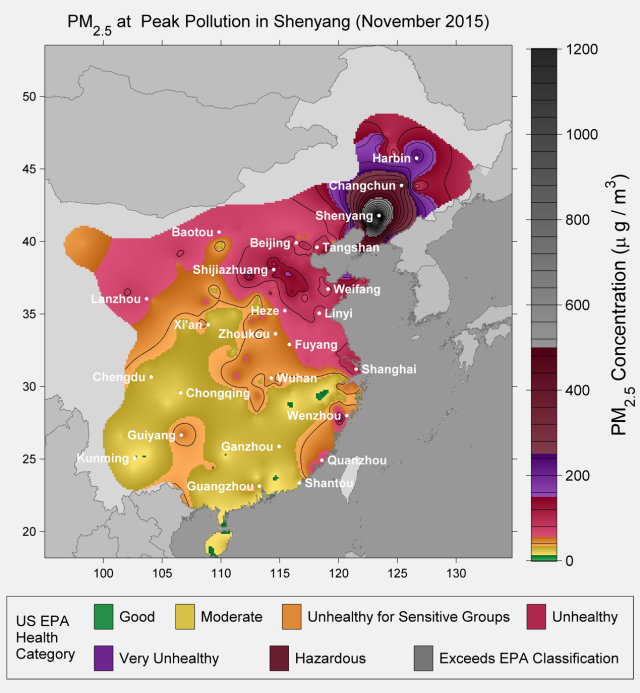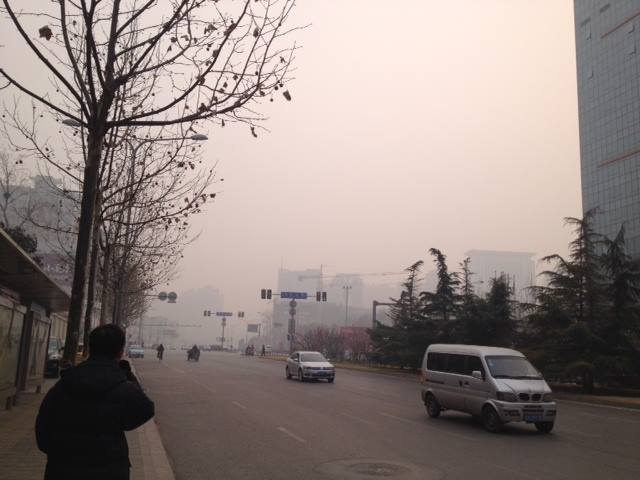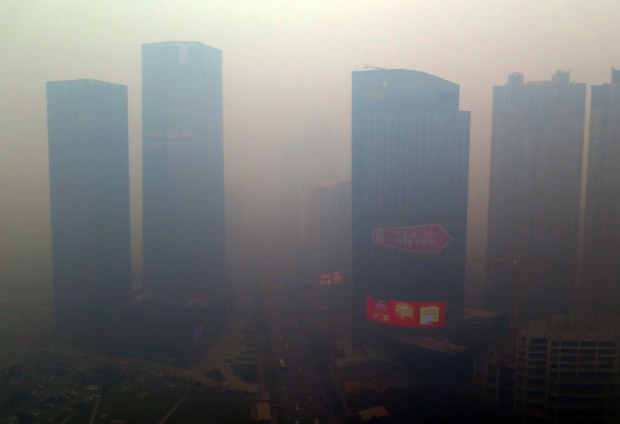 Beijing isn’t the only Chinese city exposed to unhealthy levels of air pollution.
Beijing isn’t the only Chinese city exposed to unhealthy levels of air pollution.
Air pollution in China, particularly in the northeastern cities outside of Beijing, is undeniably bad. I know it, you know it, and just about every person living in the country knows it.
But just how severe is the impact of spending one day, or even one hour, in the heart of China’s Shanghai-Beijing corridor? About 4,000 people die of air-pollution related illnesses every day, according to a study conducted by the independent research group Berkeley Earth, accounting for 17 percent of all deaths in China each year.
I used to live in Jinan, a city that has often been cited as having some of the highest air pollution levels in the country. I suffered from sinus infections, a cough and extreme fatigue during the cold season. Other foreigners, who like me had never experienced that level of pollution, complain about it as well.
 A photo I snapped of Jinan in January 2015.I could literally taste the pollution.
A photo I snapped of Jinan in January 2015.I could literally taste the pollution.
The air in Shanghai is a bit better, but it certainly isn’t good.
Berkeley Earth concluded that breathing the air in Shenyang on a heavily polluted day is the equivalent of smoking 60 cigarettes per day. On a similar note, an analysis of the report by The Economist found that a day in Beijing is like smoking 40 cigarettes a day.
PM 2.5, a fine particulate matter that can be inhaled by humans and lodge itself into the respiratory tract, is the culprit here. PM 2.5 is released by exhaust fumes and other burning fuels – including wood, heating oil and coal. The U.S. embassy in Shenyang has recorded PM 2.5 levels as high as 1000-1400 micrograms per cubic meter. The U.S. Environmental Protection Agency, Berkeley Earth reports, recommends exposure be limited to a maximum of 12 micrograms per cubic meter.
The EPA reports that particulate matter may include dust, dirt, smoke, soot, and liquid droplets. Moreover, these particles come in various sizes. Particles less than 2.5 micrometers – hence, the name – are classified as “fine” particles. These smaller particles, which are so fine that they can easily lodge themselves deeply into the lungs, are believed to pose a greater health risk than, say, a PM 10-sized particle.
The potential health consequences? Lung disease, blood clots, heart attack and the inflammation of lung tissue, which can impair heart function as well.

A photo taken on November 8, 2015 shows a residential complex in Shenyang. Berkeley Earth included the photo in its recent report. (CHINA OUT AFP PHOTOSTR/AFP/Getty Images)
According to the Berkeley study authors, inhaling 1400 micrograms of PM 2.5 – like the record-high rating in Shenyang – would be equal to smoking 60 cigarettes.
Some say the cigarette claim has been hugely inflated. An August editorial from the news website The Beijinger argues that “nowhere in China is the air pollution anywhere near the equivalent of smoking even one cigarette a day” and cited an analysis that found it’s actually closer to 1/6 of one cigarette per day. The analysis, written up in a 2011 blog post by Dr. Richard Saint Cyr,” reported that on an “average” day in Beijing, an adult “inhales a total of 1.8mg of PM2.5 particles from air pollution, which is 1/6 of the average 12mg of PM2.5 particles inhaled from an average cigarette.”
However, the page now has an addendum at top – added in October –that directs readers to a follow up article since the original post is “far more simplistic than the actual mortality data shows.” The updated article does not attempt to equate air pollution exposure to a certain number of smoked cigarettes. But it does compare the mortality risks of both cigarette smoking and PM 2.5 air pollution exposure.
Cigarette smoking, according to the report is associated with a far higher mortality risk – it’s associated with an 8 year loss in life expectancy for individuals who smoke 20-40 cigarettes per day (cause that’s inhaling a hell of a lot of PM over a lifetime.) Long-term exposure to PM in highly-polluted cities may, by comparison, lead to a three-year loss in life expectancy.
“Air pollution is associated with a much higher excess risk and loss of life expectancy compared to cigarette smoking than would be expected based on the comparative dose of fine PM,” the report concluded, noting that inhaling PM from air pollution may be unavoidable, while heavy smokers actively choose to light up.
At the end of the day, an average day in Northern China probably won’t result in as much PM inhalation as smoking a pack (or two) of cigarettes. But that doesn’t matter. The air quality is still horrible at an almost unprecedented level, with no sign of it letting up any time soon. It really might be an airpocalypse.

Pingback: Shanghai’s Beautifully Deceptive Blue Sky – Stranger In a Red Land
Pingback: 10 Random and Amazing Facts About China (Part 1) – Stranger In a Red Land
Pingback: Shanghai’s Suffocating, “Unhealthy” Smog – Stranger In a Red Land